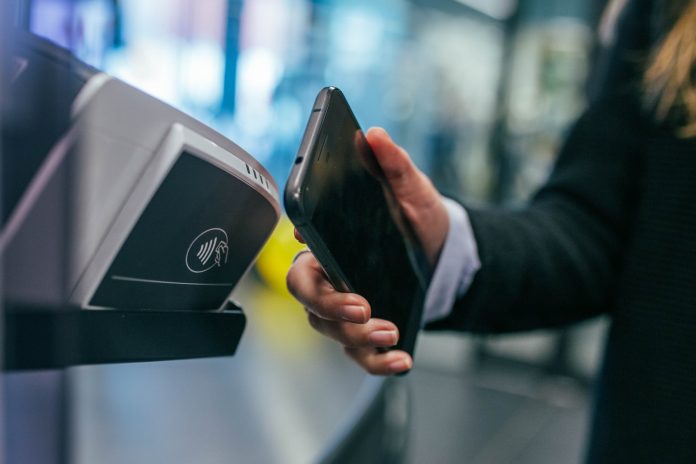
Financial technology is abbreviated as ‘FinTech’ in the present banking world. The term refers to technology devices, mobile applications, software, and other applications’ impact on improving and automating banking. In simpler words, it systematizes traditional forms of finance for businesses and consumers. This includes straightforward apps to complex blockchain networks.
What is FinTech?
FinTech combines financial services and technology. It simply encourages startups to take technology onboard and develop inventive ideas. This might include mobile payments, services, alternative financing options, online banking, financial management, etc.
The term was first introduced as technology, which was used on the back-end systems of financial institutions and banks. However, its definition has changed since then! For now, it includes quite a few applications that cater to consumers perfectly. Since the year 2019, you can now trade stocks, manage funds, and pay for your food and insurance with the help of it.
The financial technology service for banks has undoubtedly made things easier. It has influenced several applications and revolutionized specific ways for consumers to access their finances. The effect ranges from mobile payments to insurance companies. FinTech is helping consumers in more ways than you can imagine. A trending service named Bright Plan, for example, is making headlines for all the right reasons. With a Bright Plan, you can get debt-free faster. Bright also builds your savings and helps you achieve your financial goals faster. Bright’s MoneyScience™, a patented system built on 34 algorithms, studies your finances and makes smart credit card payments for you, and builds your savings, automatically. How convenient!
In such circumstances, this has turned the traditional banking ways upside down. Further, fintech is now considered a threat to brick-and-mortar banks.
In the present digital age, customers aren’t keen on going for services offered by the traditional financial services industry. This means they opt for quick and, most importantly, safe services. One of the reasons fintech has gained popularity and continues to do so!
How Has FinTech Changed the Banking Dynamics?
Following are some of the ways that have made banking easy:
Smart Chip Technology
Smart chips included in ATM cards have significantly reduced financial losses in mishaps. The cards are presented with EMV technology, included in the chip. The technology requires a one-time password from users on every transaction. This way, security is enhanced. So, if someone steals your one-time password, it won’t be able to crash your security.
In general, bank officials ask their clients to remember their passwords and avoid any hassle and trouble. Further, bankers keep looking for ways to combat theft and fraud by offering top-class security. Compared to the magnetic chip technology that uses the same password for every transaction, it is more susceptible to theft.
Biometric Sensors
In the banking division, fintech has revolutionized several things. It has given birth to quite a few innovations, and biometric sensors are one. Biometric sensors combined with Iris scanners are two technological advancements witnessed by ATMs.
The advancements are ground-breaking because they are likely to eliminate the requirement to carry the plastic card. Further, the requirement to remember a pin would be no longer needed.
Apart from the ease of carrying cards, these technologies will make ATMs more secure than ever. You will be able to access your ATM without a pin. This means finger sensors, mobile integrations, and ATMs will integrate palm and eye integration. All such integrations will identify owners, making identification more secure. For more security, ATMs also include micro-veins that eliminate ATMs’ errors in customer recognition.
Online Transactions
In the present day, fintech assists users in efficiently processing all electronic interbank payments. These electronic payments are made for social security, insurance premiums, salary, bill payments, dividend payments, and direct debits of the mortgage.
Omnichannel
FinTech services are making measures for transforming the entire bank from a branch-specific process to several digital channels. This includes online, social, and mobile. It significantly reduces the bank’s dependency on its traditional branches to function. We have already witnessed banking reducing the number of branches by closing them and adopting omnichannel banking in such circumstances.
Chatbots for Customer Interaction
FinTech has developed a unique solution to interact with humans to answer their queries. They have introduced customer chatbots, which have been quite popular since their introduction.
Chatbots are actually software that includes machine learning and natural language processing. In turn, it facilitates them to learn about human interaction. Unarguably, the bits of software are highly efficient since they streamline interactions such as query handling and helping customers in the direction of their required departments.
Chatbots are now an essential part of banking systems. It also reduces costs and improves customer satisfaction, allowing agents in the call centers to focus on value addition.
Artificial Intelligence
Over the years, AI has made progress and is now an integral part of FinTech services. AI, when combined with machine learning, is essential for fraud detection. For fraud detection, banks have software onboard that alerts clients whenever there is a fraudulent transaction. Later, it is backed up by human interrogation that finally recognizes whether the attack was actual.
However, with time, fraudulent people overcome it and develop new ideas. This is where AI jumps in and takes center stage.
E-wallets
The immense growth and popularity of e-wallets indicate the rise of FinTech. Samsung pay, PayPal, Android Pay, and Apple Pay are quite a few major e-wallet companies worldwide. These wallets are used for several functions, including P2P payments, top-up, utility bills payments, international remittances, and booking payments.
Further, Starbucks and Walmart Pay are some standalone examples of e-wallets. It attracts users with tempting offers, discounts, cashback, reward points, etc. Due to its success, banks have now realized its significance and take it as a collaborative measure in technological advancements due to its success.
Mobile Banking
Mobile banking is one of the convenient FinTech services. Most banks include a user-friendly interface. Further, banks have applications that recognize users’ fingerprints. The app helps them perform any function without any app or hardware.
In the present day, FinTech is more significant than ever and continues to rise. It is all set to become more prominent than ever with financial core banking software, retail banking software, and include other components under it.










